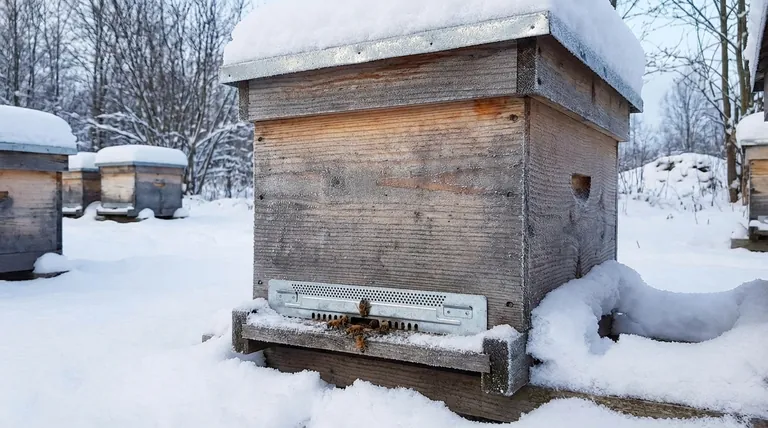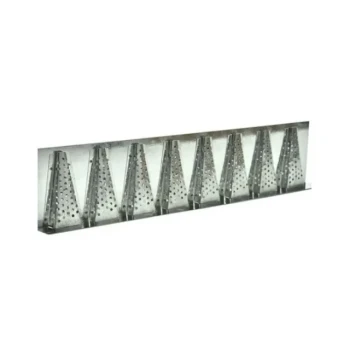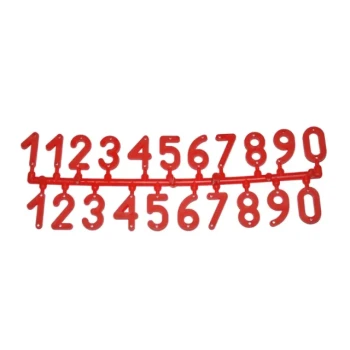In short, reducing the hive entrance in winter is a critical step for two reasons: it provides essential defense against pests like mice seeking shelter, and it helps the colony conserve heat by blocking cold wind and drafts. This simple action directly addresses the bee colony's greatest vulnerabilities during its dormant period.
The core principle is this: a winter bee colony is smaller, slower, and clustered for warmth, making it unable to defend a large opening or fight extreme cold. An entrance reducer creates a manageable, defensible space that is crucial for the colony's survival.

Why a Winter Hive is Vulnerable
To understand the function of an entrance reducer, you must first understand the challenges a honeybee colony faces in winter. The hive is not simply a dormant box; it's a living organism fighting to survive.
The Threat of Intruders
In the fall and winter, rodents like mice are desperately seeking warm places to nest that are also close to a food source. A beehive, with its stored honey and insulating wax comb, is an ideal target.
A colony with a large, open entrance is an easy target. The bees, clustered together for warmth and slow-moving from the cold, cannot mount an effective defense against a determined mouse.
The Problem of Heat Loss
A honeybee cluster generates heat by vibrating the flight muscles of individual bees. This collective effort maintains a core temperature that is vital for survival, especially for the queen.
A wide-open entrance acts like an open door in a heated house, allowing cold air and wind to pour in. This forces the bees to expend significantly more energy and consume more of their honey stores to maintain their life-sustaining temperature.
How the Entrance Reducer Works
An entrance reducer is a simple wooden cleat that fits into the main entrance of the hive, offering different-sized notches to create a smaller opening. Its function is elegantly simple but profoundly effective.
Creating a Defensive Bottleneck
By reducing the entrance to a small hole, you create a chokepoint. Even a slow, cold-impaired colony can guard a tiny opening, preventing pests from forcing their way inside.
Many beekeepers use the smallest setting on the reducer and may supplement it with a metal mouse guard for absolute protection.
Acting as a Windbreak
The reducer physically blocks the direct flow of wind into the hive. This drastically reduces drafts and improves the hive's overall insulation, allowing the bees to conserve precious energy and food stores that they need to survive until spring.
A Note on Maintenance
It is critical to periodically check the reduced entrance throughout the winter. Dead bees can accumulate and block the opening, which can be fatal to the colony by trapping moisture and preventing crucial "cleansing flights" on warmer days. A simple wire or stick can be used to gently clear any obstructions.
Common Pitfalls to Avoid
While essential, using an entrance reducer improperly can create new problems. A trusted advisor must point out the potential downsides to ensure your success.
The Risk of a Complete Blockage
The primary risk is that the small opening becomes clogged with dead bees, ice, or snow. A fully blocked entrance prevents ventilation, leading to moisture buildup and potential suffocation. Regular, quick checks are non-negotiable.
Forgetting About Ventilation
The goal is to reduce drafts, not to seal the hive hermetically. Bees require a small amount of airflow to manage moisture. A completely sealed hive is a death trap. The reducer provides the ideal balance of protection and necessary ventilation.
Making the Right Choice for Your Hive
Using an entrance reducer isn't just about following a rule; it's about applying a principle to your specific conditions.
- If your primary focus is pest control: Use the smallest notch on your reducer and consider adding a dedicated metal mouse guard for complete security.
- If your primary focus is insulation against harsh winds: Position the hive so the entrance faces away from prevailing winds and ensure the reducer is installed snugly.
- If you are in a milder climate: You may only need to reduce the entrance partially, but it is still wise to do so to prevent opportunistic robbing or pest intrusion.
Ultimately, this small piece of wood is one of the most effective tools a beekeeper has to help a colony successfully navigate the rigors of winter.
Summary Table:
| Benefit | Key Function | Outcome |
|---|---|---|
| Pest Defense | Creates a defensible chokepoint | Prevents mice and other intruders from entering |
| Heat Conservation | Blocks cold wind and drafts | Reduces energy expenditure and honey consumption |
| Moisture Management | Allows for necessary ventilation | Prevents fatal condensation and suffocation |
Protect your commercial apiary's winter investment with professional-grade equipment from HONESTBEE. Our entrance reducers and mouse guards are designed for durability and effectiveness, helping your colonies survive and thrive. Ensure your operation's success—contact our wholesale experts today to discuss your winter supply needs!
Visual Guide

Related Products
- Beehive Entrance Reducer Guardian Metal Hive Entrance for Bees
- Steel Round Disc Entrance Reducer for Flexzion Bee Hive Nuc Box Gate
- Professional Reversible Beehive Hive Entrance
- Multi-Functional Sliding Hive Entrance for Beekeeping
- Multi-Functional Rotary Hive Entrance Disc for Beekeeping
People Also Ask
- How can a Langstroth hive entrance be adjusted? Mimic Natural Bee Preferences for a Healthier Hive
- What happens if you seal an entrance to a bee hive? Avoid a Costly Structural Disaster
- What is the purpose of placing an object in front of the hive entrance after a move? A Guide to Forced Reorientation
- What size is the entrance hole in a native bee hive? The 13mm Standard for a Thriving Colony
- How big should a beehive entrance be? Optimize for Colony Health & Honey Production



















